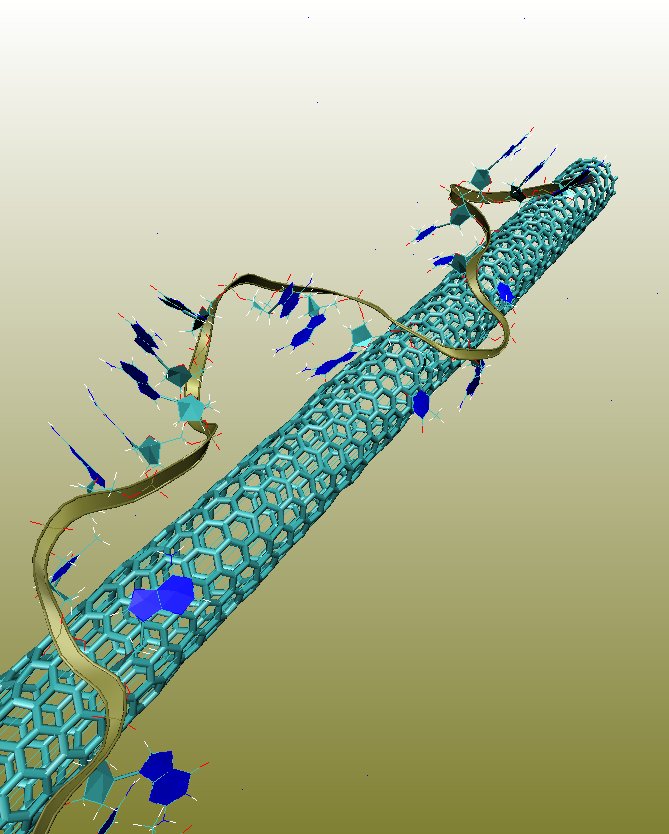Research Faculty from UPRH
-
Pablo V. Negrón (pnm@mate.uprh.edu), Research Areas: bifurcation theory, nonlinear elasticity, pde's.
In this project we perform analytical studies that help to understand experimentally observed behavior of nonlinearly elastic columns undergoing uniaxial compression and extension. The complementing condition is an algebraic compatibility requirement between the principal part of a linear elliptic differential operator and the principal part of the corresponding boundary conditions In the context of the linearized boundary value problems of elasticity, violations of the complementing condition have been associated to surface wrinkling. This condition figures prominently in the recent treatments to the problem of global continuation of solutions in three dimensional nonlinear elasticity. We have noticed that in the context of elasticity there is a recurrent relation between violation of the complementing condition and bifurcation that has not yet been studied in depth. We want to study and clarify this relationship between bifurcating branches of nontrivial solutions and violation of the complementing condition in the context of our problems, and more generally in other boundary value problems.One way to overcome the failure of the complementing condition by considering boundary value problems whose stored-energy function is assumed to depend on the second order gradient of the deformation. This will help to clarify the relation between violations of the complementing condition and bifurcation of solutions; and to understand the implications for concrete BVP's of introducing higher-order gradients of the deformation in the stored-energy functions that model mechanical behavior of materials.
-
Elio Ramos (eramos@mate.uprh.edu), Research Areas: time series, simulations of biological systems.
In this sub-proposal we will develop a Delay Differential Equations (DDEs) solver by embedding some of the legacy numerical codes, publicly available, with new developments in the new technology of open source script languages. Delay differential equations are extremely important in mathematical modeling. DDEs arise in the description of phenomena were there is a delay between cause and effect. Many situations in biological systems can be described mathematically using DDEs, for instance, biological populations require a delay corresponding to the period of maturation in their life cycle. Similarly, the description of epidemics and physiological control requires a delay corresponding to the incubation period and the reaction time of the organism to the CO2 respectively . If the delay is small, in comparison with the time scales of the phenomena, a convenient assumption neglects the delay and describes the phenomena using Ordinary differential equations (ODEs). This assumption is convenient mostly because there is a full body of elementary and advanced analytical and numerical techniques for the solution of ODEs. These techniques are typically discussed in introductory undergraduate courses on ODEs and mathematical modeling. However, in many realistic situations the delay is not small and the ODE formulation is not a realistic assumption. Only for very special cases it is possible to obtain analytical solutions of a DDE and in most of the cases numerical solutions has to be employed.
-
José Sotero (jse@mate.uprh.edu), Research Areas: communication sciences, molecular dynamics.
We are proposing to set-up a small research group at the UPRH to work on the elucidation of applied mathematic problems relating to the field of sensors, actuators and their network. This work will involve the collaboration of the UPRH research group in physics and electronics, as well as collaborators from the University of Pennsylvania in Philadelphia. Information processing is a mature technology with an extensive theoretical base. The field of computer science has grown hand in hand with the technology to the extent that it might be considered, perhaps together with bio-science, the largest intellectual enterprise during the last half century. The case of information acquisition is different. It has been lagging behind processing, and the need for a firm theoretical base to guide its development is all but starting. Sensors, actuators and transducers in general allow computers to access the physical world and to act on it. If we dissect a sensor, we note that it might be a complex sub-system, but at the core of its workings is the sensing element which transduce (change) an (usual) energy input into an electrical signal. The sensor can be a physical sensor (temperature, force, pressure, etc) or bio / chemical sensor (the activity of certain chemical species). The physics and chemistry of the transduction process must be clearly understood and quantify if the effective utilization of the sensing system is the primary object. Most of the physico-chemical theory problems involves a field theory (potential theory) of sort, with challenging boundary value problem.
-
Ivelisse Rubio (ive@mate.uprh.edu), Research Areas: Computational algebra and communication sciences. (Fall 2005-Spring 2007)
In digital communication systems, error control codes are used to protect information from errors that might occur during transmission. In satellite communication systems, the transmission distances are large, causing signal attenuation and hence introducing errors in the communication. Turbo codes are specially suitable for this and other wireless applications since they provide error control performance with a good reduction in the transmitter power levels. Turbo encoders are parallel concatenated encoders where two or more convolutional codes are combined by an interleaver. The interleaver plays a fundamental role in the performance of turbo codes. The actual standard for turbo codes uses interleavers that are generated randomly. One of the major draw backs of these type of interleavers (random and S-random) is that they have to be found by computer searches and have to be stored in memory, which implies a more complex implementation. Another problem with S-random interleavers is that their existence is not always guaranteed. To avoid these problems, researchers have considered deterministic constructions that can be generated on the fly, could be analyzed a priori and perform as well as random interleavers. The purpose of this project is to continue our work on algebraic constructions of interleavers. We will study certain properties of permutations of finite fields constructed using Dickson polynomials and their relation to the performance of the codes constructed using these interleavers.
